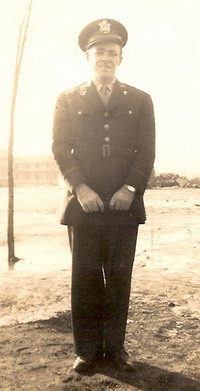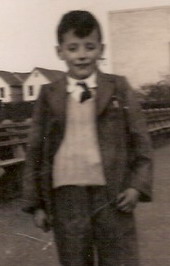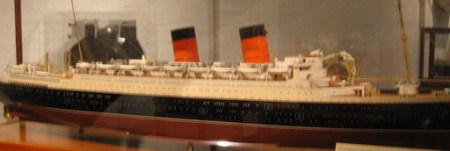As I said earlier, both my parents had lived in the US when they were young—before they met, married, and began a family on a small farm in County Leitrim. So what inspired them to pick up and emigrate with four young children in 1948? My father was then 48 years old, my mother 40.
At some time I will tell more about our parish of Aughavas and our little townland of Graigeog. I prefer “Graigeog” to the usual spelling “Gradoge”, by the way, because the latter would lead to one pronouncing it “grad-oge”; we always said “grad -joge”; it means “village” or “hamlet”. But leaving all that aside …
Anyway, why did we emigrate? Briefly: my uncle, John Francis Kenny, played a crucial role in this. (I may have a lot more to say about Father John in the future). After studying for the priesthood he went to the US in 1930, and was a priest in rural Missouri. He enlisted as a chaplain in the US army during the war (against his bishop’s wishes).

In 1945 he was with the American occupation forces in Germany, and somehow managed to get a pass from the Seventh Army commander, Gen. Alexander Patch, to visit his family in Ireland for Christmas. There were complications because Eire had been neutral during the war; which may be why I remember him as wearing a funny white checked suit (not a uniform), always in a hurry to see and talk to everybody—at full volume! So there were always crowds of people around. He chain-smoked his American cigarettes, tossing them away when only half-consumed; and youngsters would pick up the “fags” and keep them from going to waste.
I might mention that Fr. John made quite a sensation when he told the neighbors what it was like to liberate a German concentration camp—which certainly dampened some of the pro-German feeling which went along with continuing bitterness toward England. One item: my brother John remembered him telling our father how he and the other officers had to take over the job of burying dead, starved prisoners (I think this was at Dachau?) – because the enlisted men assigned to that duty went berserk and began shooting the captured guards. I guess it helped to unload this on his oldest brother; my dad could be a good and comforting listener.
But the other thing he talked to my dad about was the need to emigrate. Fr. John probably had the shock of many a returning Irishman in those days, of seeing anew how backward his native land really was. John F. Kenny could always be very persuasive when he was sure he was right! And from that followed our emigration from Ireland, though not until nearly three years later.
For a man of 48 with a 40-year-old wife, starting over in a new country with four young children must have been a daunting task—even with the strong support of his priestly brother, and some (I think reluctant) promises of support from a relative already in the US who was in a position to help. I wonder if my dad was familiar with the mournful old song of emigration:
A Stór Mo Chroí, in the stranger’s land
There is plenty of wealth and wailing.
Whilst gems adorn the great and the grand
There are faces with hunger paling.
But he and our mother made the fateful decision for us all. We departed, leaving the little farm to my uncle Peter Kenny. And it all worked out.

